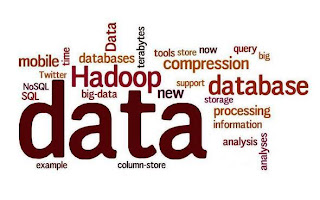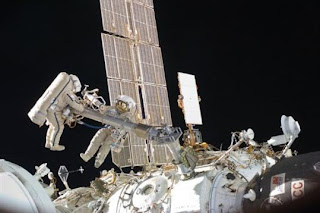 Le Big Data a fait irruption dans le paysage de l'informatique et du décisionnel depuis environ un an, mettant la donnée au cœur de la stratégie de l'entreprise. Au delà de la problématique technique de traitement de très importantes volumétries de données, de réels enjeux "business" sont au coeur de cette nouvelle révolution.
Le Big Data a fait irruption dans le paysage de l'informatique et du décisionnel depuis environ un an, mettant la donnée au cœur de la stratégie de l'entreprise. Au delà de la problématique technique de traitement de très importantes volumétries de données, de réels enjeux "business" sont au coeur de cette nouvelle révolution.
J'aurai l'occasion d'approfondir cette question qui me passionne (nous sommes clairement à un tournant de l'univers des SI), et en attendant je vous propose de découvrir l'analyse de
Shomit Ghose, Partner au sein de
ONSET Ventures, une société de Capital risque particulièrement présente dans les technologies d'avenir et les projets innovants :
"Remember sitting through your college physics classes wondering when you’d ever need to apply what you were learning? That time has now come. In spades.
In physics, the second law of thermodynamics states that all systems seek to evolve so as to either minimize their energy or maximize their disorder (AKA entropy). From a state of zero entropy at the Big Bang, our universe has been expanding toward a state of maximum entropy for roughly the past 14 billion years. And today, in my day-to-day life as a venture capitalist investing in software companies, every start-up I see is directly related to the second law of thermodynamics.
Death, Taxes and Free Computing
Computing has been subject to the same forces as the physical universe. From the zero entropy moment of the commercial introduction of the UNIVAC I in 1951, all aspects of computing have been hurtling toward maximum entropy. In computing hardware, for example, we’ve gone from the “minimum energy” model of the mainframe, to rapidly accelerating entropy with the minicomputer, the PC, the-device-formerly-known-as-the-cell-phone, and now the tiny wireless sensors that comprise “the Internet of Things.” As computing hardware has become steadily smaller and more ubiquitous, the cost of computing cycles has decreased apace, and now has been commoditized to the point that it asymptotically approaches zero.
The same dynamic has unfolded in networking bandwidth. From the limited reach, penetration and bandwidth of the LAN and WAN networks of yore, today’s networks are ubiquitous – think 3G, 4G, Wi-Fi, Bluetooth, NFC – available at ever-higher speeds, and at precipitously lower cost per bit.
Software has also been hurtling toward maximum entropy. Historically, enterprise software sales models – e.g., pricing, go-to-market strategy – paralleled those of Big Iron hardware. Not so long ago, a software company’s board of directors would have rejoiced if the company closed a single $5 million deal. Today, a software company’s board rejoices if their company closes five million $1 deals. Some of the most successful companies in the world – Google and Facebook stand as prime examples – earn their billions of dollars in annual revenue in fractions of a cent at a time. We live in an age where open source software, mobile applications and on-demand SaaS and cloud-based applications have commoditized software to the point that the price of applications is also asymptotically approaching zero.
Computing truly has become “the land of the free.”
Data: the Only Remaining Business Model
With hardware, networks and software having been commoditized to the point that all are essentially free, it was inevitable that the trajectory toward maximum entropy would bring us to the current age of Big Data."
 "The true cost of bad data is unknown and unknowable"
"The true cost of bad data is unknown and unknowable"









